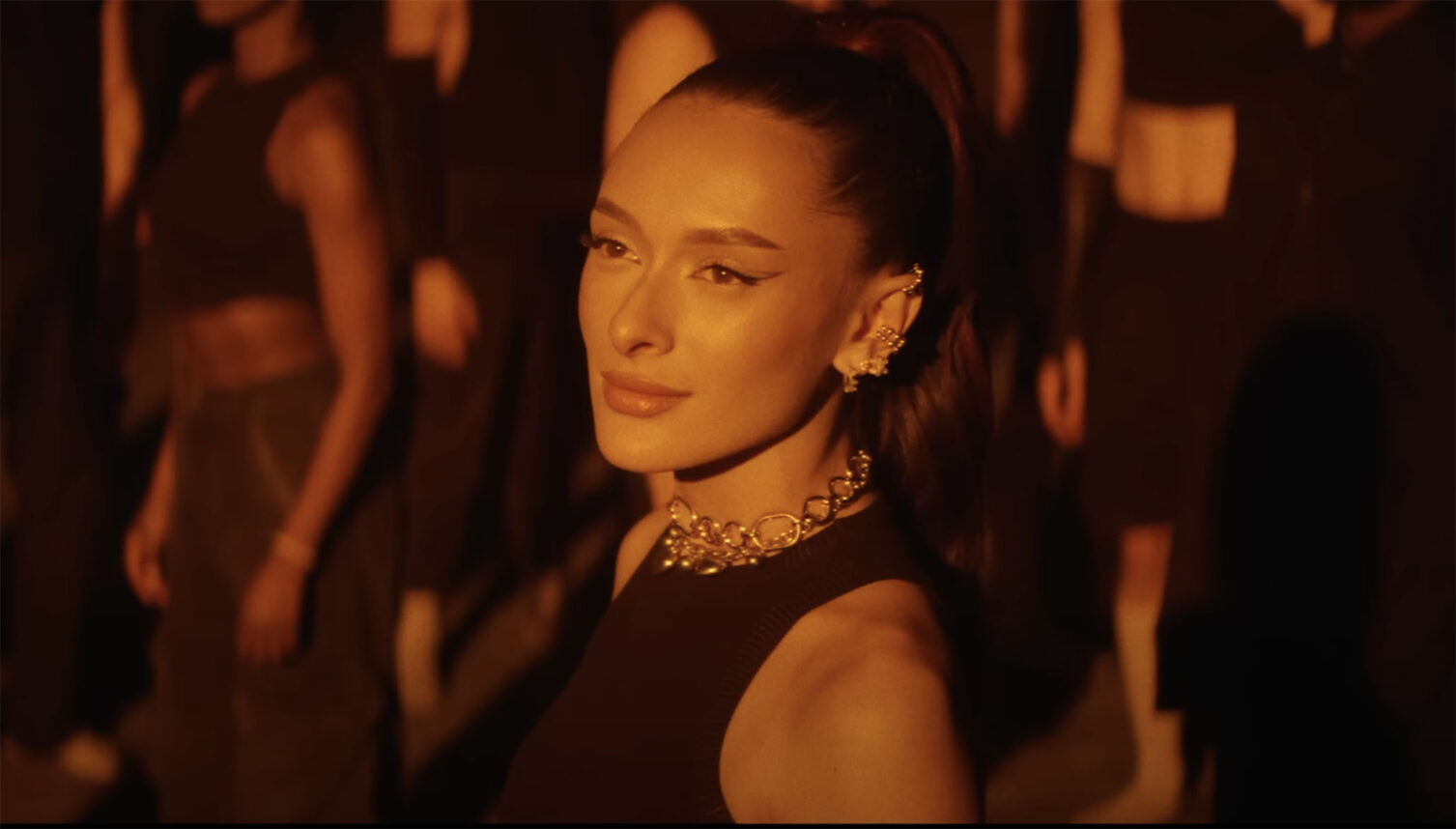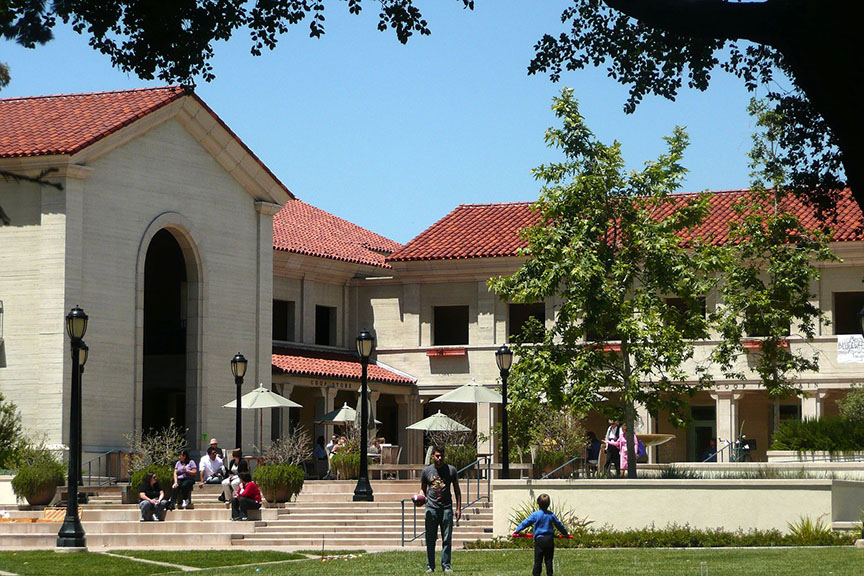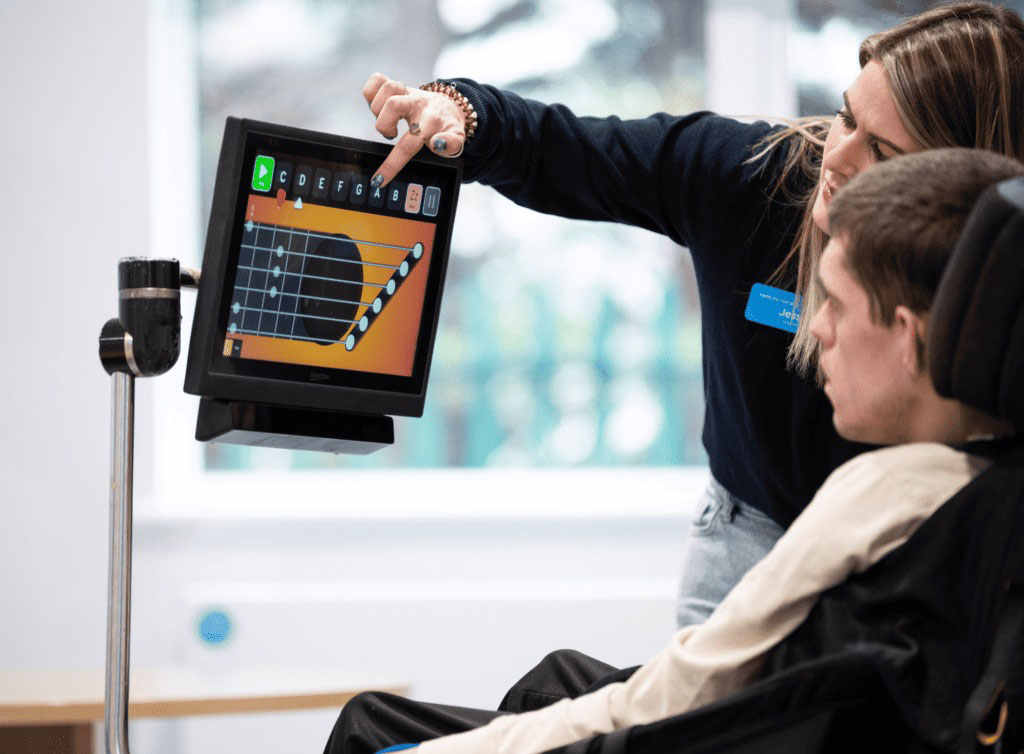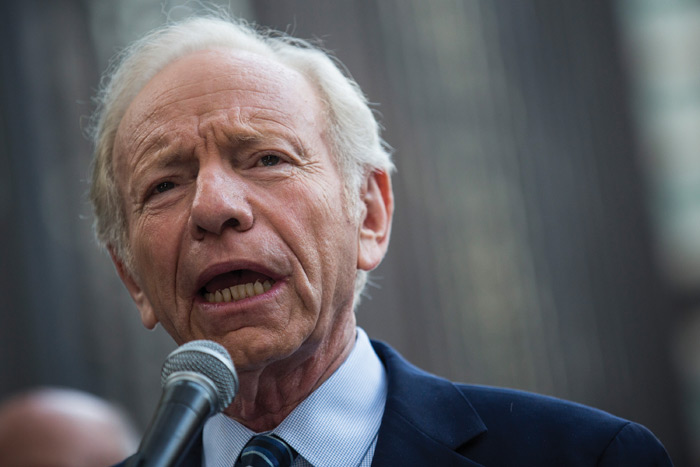 Portrait of Sarah Bernhardt
Photo by Evan Henerson
Portrait of Sarah Bernhardt
Photo by Evan Henerson They’re baaack.
Those unforgettable visages of Kafka and Einstein, Buber and Stein, Brandeis, Bernhardt and the Brothers Marx, Gershwin, Meir and Freud are together again, lining the walls of the Skirball Cultural Center. The silkscreen portraits are rendered in the kind of eye-popping color and quirky geometric fragmenting that marks them as unmistakably the work of one artist: pop genius Andy Warhol.
They’re back, but they’ve never really gone away. Since their 1980 unveilings in Rockville, Md., Miami and the Jewish Museum in New York, Warhol’s well-traveled “Ten Portraits of Jews of the Twentieth Century” have been reviled and embraced, criticized and celebrated. Whether under the titles “Ten Jewish Geniuses” or more colloquially “Warhol’s Jews,” these portraits have rarely left people feeling neutral about them.
Working from existing photographs, Warhol created a series of silkscreen prints and paintings both for exhibition purposes and because he figured they would sell. The Skirball has owned a set of the silkscreen prints as part of its permanent collection since the early 2000s and exhibited the 10 portraits together in their 2000 exhibition, “Revealing and Concealing: Portraits and Identity.” The center’s curatorial staff decided now would be an appropriate time to bring them out and juxtapose them with concurrent exhibitions of the clothes of Rudi Gernreich (“Fearless Fashion”) and the photography of Kwame Brathwaite (“Black Is Beautiful.”)
“We also wanted to play with the pictures a little bit,” said Cate Thurston, one of four curators who worked on the exhibition. “Looking at that long history, we wanted to add a little bit of depth to contextualize the subjects in ways that Warhol didn’t. So for us, this is really about showing this body of work, acknowledging its interesting history and then adding the context Andy Warhol didn’t. Because that’s really our mission: the intersection of American democratic values and the Jewish American experience.”
Displaying the Warhols under the “Skirball Spotlight” rubric, the center has added a new component courtesy of the Skirball Teen Council. Viewers can download an accompanying audio tour created by high school students to give them more detailed information about the 10 subjects, allowing visitors to engage more closely and appreciate their significance.
“When Warhol was criticized for being superficial and not being intellectual or historical in his selection, my response would be, ‘Yeah, and that’s why people love Warhol.’” — Richard Meyer
Granted, Albert Einstein and Sigmund Freud are not exactly strangers to most people, but in a certain way the audio tour helps fill in the information gap that Warhol created. When the 10 portraits were first displayed in 1980, the artist was taken to task for pandering to a commercial audience and for not giving his “geniuses” their celebratory due.
New York Times critic Hilton Kramer slammed the show, saying it “reeks of commercialism and its contribution to art is nil. The way it exploits its Jewish subjects without showing the slightest grasp of their significance is offensive — or would be, anyway, if the artist had not already treated so many non-Jewish subjects in the same tawdry manner.”
Harsh words, and not necessarily deserved, said Richard Meyer, the Robert and Ruth Halperin Professor in Art History at Stanford University who curated a 2008 exhibition at the Jewish Museum fittingly titled “Warhol’s Jews: Ten Portraits Reconsidered.”
“When Warhol was criticized for being superficial and not being intellectual or historical in his selection, my response would be, ‘Yeah, and that’s why people love Warhol,’ ” said Meyer, the author of “Contact Warhol: Photography Without End.” “Warhol is one of the most famous and influential artists of the 20th century and his style is this pop style that is all about the surface of the image. If he had suddenly tried to do something very scholarly or very humanistic portraying these subjects in all their different dimensions, people wouldn’t have been happy because it wouldn’t have been a Warhol.”
The artist was already celebrated for his renderings of pop culture figures including Marilyn Monroe, Muhammad Ali and Mick Jagger, and he included a portrait of Israeli Prime Minister Golda Meir in a 1979 exhibition at the Whitney Museum of American Art. Warhol had no notable connection to the Jewish faith or culture. His friend Ronald Feldman, a New York art dealer, suggested the Jewish genius series and the two men culled from a lengthy list of candidates to arrive at the 10. Although people like Barbra Streisand, Bob Dylan and Sammy Davis Jr. were considered, the decision was ultimately made to choose only individuals who were no longer alive, in part so the works would not be accused of being commissioned, according to Meyer.
The eclectic mixture of artists, philosophers and thinkers had no real rhyme or reason. Warhol famously said he chose the subjects because he “liked their faces.” He did not initially know anything about Martin Buber but thought the philosopher resembled Moses.
“The overarching interest of Warhol’s career is celebrity and fame and aesthetics,” Thurston said, “and that interest is profoundly in keeping with his work both in the selection process and then stylistically.”
In helping to organize the Skirball exhibition, Thurston noted that students have responded to the portraits of Albert Einstein and Franz Kafka with their unusual angles. A fan of comedy, Thurston delights in the repeated images of Chico, Groucho and Harpo Marx peering rakishly out of Warhol’s canvas.
“My other favorite would be Sarah Bernhardt. I like the geographic placement of that work,” she said. “But in terms of sheer personal draw, it has to be the Marx Brothers.”
In the nearly 40 years since their debut, the portraits have appeared in cultural and community centers as well as synagogues and galleries. They have been reproduced on book covers and one of the paintings of Louis Brandeis was donated to Brandeis University to honor the 150th anniversary of the Supreme Court justice’s birth.
“Now they have become almost completely honorific,” Meyer said. “Nobody thinks of them as anti-Semitic anymore. They’ve changed in people’s perceptions.”
“Spotlight: Andy Warhol — Ten Portraits of Jews of the Twentieth Century” continues through Sept. 1 at the Skirball Cultural Center, 2701 N. Sepulveda Blvd., Los Angeles. For more information, visit skirball.org
CORRECTION: Due to incorrect information provided to the Journal, an earlier version of this story stated that Andy Warhol’s “Ten Portraits of Jews of the Twentieth Century” had never been showcased at Skirball when in fact they had in 2000.






















 More news and opinions than at a Shabbat dinner, right in your inbox.
More news and opinions than at a Shabbat dinner, right in your inbox.